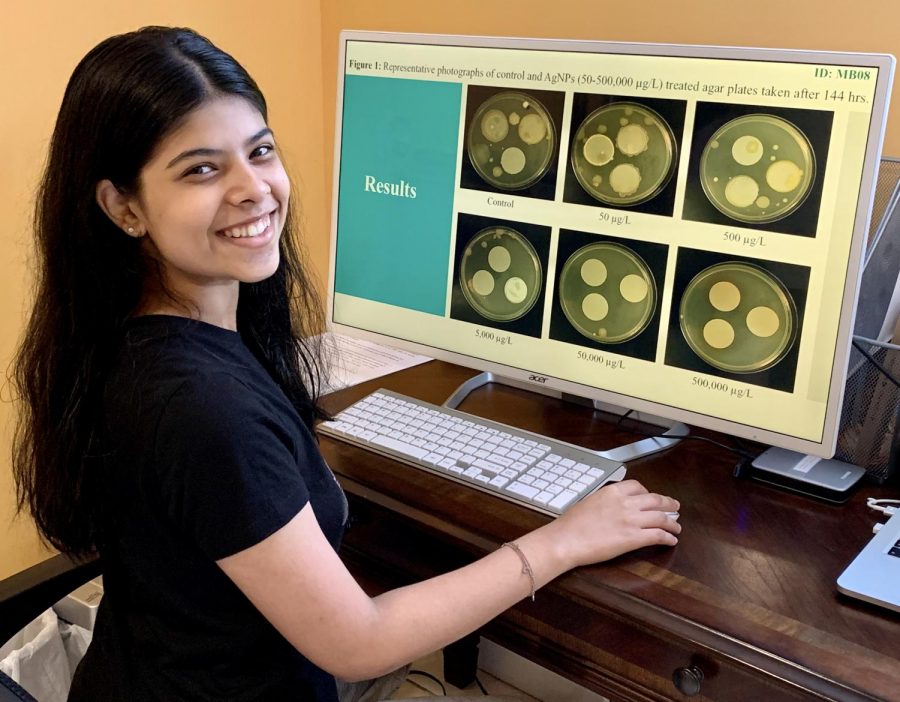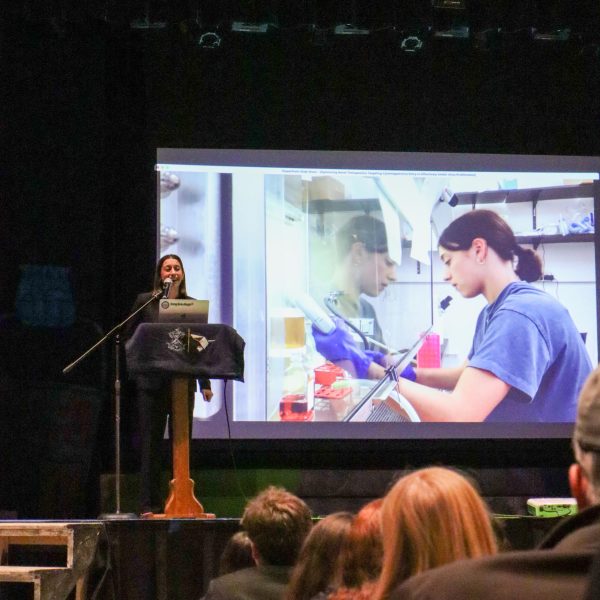Irene Basu selected one of top 300 Broadcom MASTERS in nation’s premier STEM competition for middle schoolers
Editor’s note: This press release was provided by the Pelham Union Free School District.
In September, 9th grader Irene Basu, was selected as one of the top 300 Broadcom MASTERS from a pool of 3,472 students from 42 states and Puerto Rico who competed in the prestigious science competition. Broadcom is the nation’s premier STEM competition for middle school students. Irene, whose project is titled “The antibacterial effect of m ‘Ag’ nificent tiny particles,” conducted her research last year as part of the Pelham Middle School’s STEAM Club, is the first Pelham Middle School student to earn this distinction. The MS STEAM Club began just three years ago and has had a Broadcom qualifier in each of those years.
“First and foremost, I would like to thank the Pelham School District for providing me with the opportunity to participate in STEAM club,” Irene said. “When I was first notified of my placement in the top 300 for Broadcom MASTERS, I was thrilled! The experiment I had conducted did require a lot of patience and planning, and to see the results of my hard work pay off was very rewarding. The award means a lot to me and will only encourage me to work harder and better.”
“During the process, I had to make sure I was putting my best step forward while completing the experiment, so winning the award gave me a sense of gratification.”
Irene said that she plans to continue working on her research.
“In the future, I would like to expand my project by including more variables to increase the accuracy of the experiment,” she said. “The field of science is certainly very interesting, as the unexpected twists and turns can either make or break an experiment. In order to be a better young scientist and researcher, I will work harder to make sure my findings serve a purpose.”
“Even though I did win an award, development is a more significant part of the scientific process. Continuing my research will ensure the evolution and improvement of my own capabilities, therefore assisting me in becoming a better student overall.”
Teacher Maria Buckley, who advises the MS STEAM Club said she was proud of Irene’s work and the recognition she received.
“Throughout Irene’s three years as a member of the MS STEAM Club, she developed the necessary skills to conduct research and her technique and ability to present her ideas blossomed,” said Mrs. Buckley. “She was constantly motivated to come up with more challenging topics to explore. Her hard work and perseverance earned her a national recognition. She is an inspiration to her peers.”
Project Summary:
Pathogenic exposure accounts for many human casualties each year, and those who are 60 years or older, are more susceptible to death by infectious diseases. Silver nanoparticles (AgNPs), range from 1 to 100 nanometers (nm) in diameter, have been successfully utilized against multi-drug resistant bacteria, making it a very effective therapy to use in medical science. I hypothesized that if silver nanoparticles are antibacterial, then the concentrations of 500 to 50,000 ug/L will be able to neutralize the E. coli. I used colloidal silver (a mixture of AgNPs and silver ions 500 PPM) and performed a 1:10 serial dilution to create the concentrations ranging from 50,000 to 50 ug/L. Sterile disks dipped in distilled water used as controls. After applying equal amounts of reconstituted E. coli, I monitored the bacterial growth every 24 hours up to 144 hours in an incubator at 19℃. I measured the diameter of the zone of inhibition (the area around the filter disc where no visible bacteria grow) with a metric ruler. The diameter of the zone of inhibition of the plate treated with 500,000 ug/L plate was the highest of 2.5 cm. The remarkable bacterial growth inhibition by 144 hours was gradually increased in the 5,000, 50,000, and 500,000 ug/L groups. Based on my findings, I concluded that silver nanoparticles have a strong bactericidal effect on E. coli in the concentration range of 5,000 ug/L or higher. Personalizing Nanomedicine based treatments can be highly beneficial in treating multiple infectious diseases in humans.









